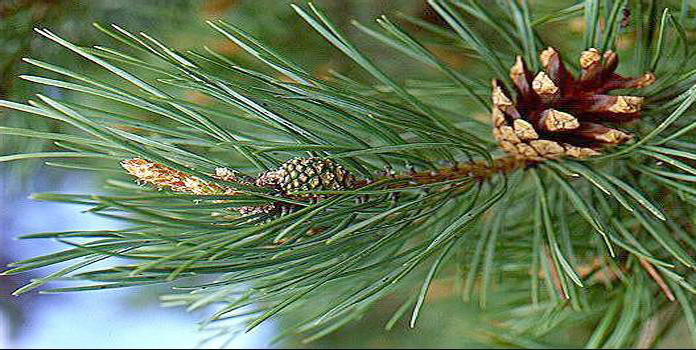
Pine oil provides a pile of profound health benefits as tall as its trees. Discover more about pine oil and why it's a favorite essential oil in aromatherapy.
What Is Pine Oil?
Pine oil is a colorless to pale yellow essential oil. Depending on its source, pine oil may either have a fresh, earthy, and forest-like fragrance or a strong, dry, balsamic, turpentine-like odor. Also called fir leaf oil or oleum folii pini sylvestris, pine oil should not be confused with pine nut oil. Pine nut oil, which is also referred to as pinon, pine kernel, or Indian nut, is a vegetable oil mostly used for cooking. It is derived from the seeds of the pine tree. 1
Pine oil, on the other hand, is extracted through steam distillation of the needle-like foliage of the pine tree. Generally, pine oil comes from trees of the genus Pinus. Some of its well-known varieties include:2
- Dwarf pine needle (Pinus mugo) – A tall and shrub-like tree harvested from the Swiss Alps. In Europe, this plant is used in healing skin and scalp diseases.
- Long leaf pine or turpentine (Pinus palustris) – This tree, which grows up to 150 feet, originates from the United States and is widely used for the distillation of American gum spirits of turpentine. It was also used by the Native Americans to prevent scurvy. 3
- Scotch pine or Norway pine (Pinus sylvestris) – This high, evergreen tree has a reddish-brown and deeply fissured bark that grows pair of long, stiff needles. Largely produced in the Baltic states, the essential oil from this species is a hypertensive, tonic stimulant.
Uses of Pine Oil
Below are some practical uses for pine oil – plus handy tips on how you can use it at home. Pine oil can be used as:
- Fragrance in soaps, creams, detergents, and many pharmaceutical preparations – Analgesic ointments, nasal decongestants, and cough and cold medicines4
- Flavoring component in many edible products, including alcoholic and non-alcoholic beverages, baked goods, confectionery, frozen dairy desserts, gelatins, and puddings
- Insect repellant – To protect your wool sweaters from moths and other insects, pour 10 drops of pine oil onto small pieces of untreated wood. Place the pieces of wood in your closets or drawers.5
- Air freshener – Eliminate the awful smell of cigarettes and stale air by adding four drops of pine oil to one cup of water. Pour the mixture in a spray bottle, shake it well, and spray it to instantly freshen up your room. Avoid spraying it on furniture.
- Massage oil before and after exercise – Create your own pre-and post-workout massage oil to prevent or soothe strained muscles. Add three drops of pine oil, juniper-berry oil, and rosemary oil in two ounces of jojoba oil.
Composition of Pine Oil
Pine oil contains 50 to 97 percent monoterpene hydrocarbons, of which 60 to 65 percent is a-terpineol. It also has car-3-ene, dipentene, β-pinene, a-terpinene, y-terpinene, bornyl acetate, cadinene, sylvestrene, and camphene. 6
Pine oil is best blended with botanical essential oils like cedarwood, rosemary, sage, labdanum, and juniper.
Benefits of Pine Oil
Pine oil has antimicrobial, antiseptic, antifungal, anti-neuralgic, and anti-rheumatic properties.7 It also works as a good decongestant and expectorant for respiratory ailments. In addition, pine oil is praised for its ability to naturally:http://articles.mercola.com/herbal-oils/pine-oil.aspx
What I love about pine oil is that it's a natural analgesic and anti-inflammatory agent, which makes it a potential substitute for non-steroidal anti-inflammatory drugs (NSAIDs) that comes with loads of devastating side effects.
- Ease muscular stiffness and rheumatism as a rubefacient8
- Relax the body when added in bath
- Stimulate healthy metabolism9
- Boost activity levels
- Help eliminate excess water, uric acid, salt, and fat through urination
- Neutralize free radicals with its rich antioxidant capacity
- Cure urinary tract infection (UTI)
Click Here For More Articles

No comments:
Post a Comment